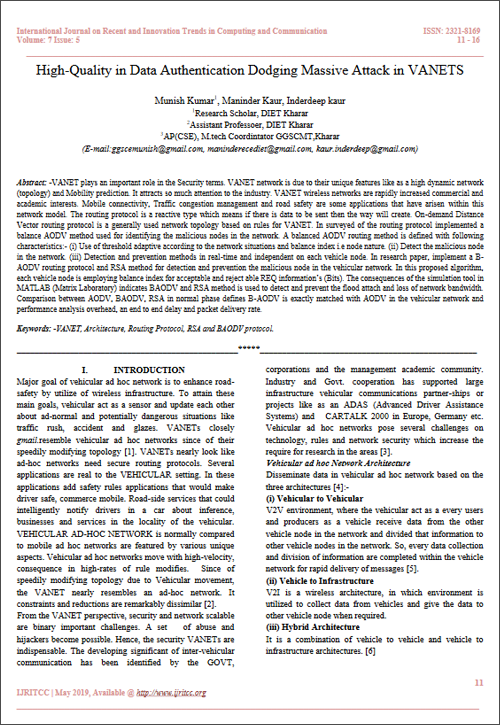High-Quality in Data Authentication Dodging Massive Attack in VANETS
Main Article Content
Abstract
VANET plays an important role in the Security terms. VANET network is due to their unique features like as a high dynamic network (topology) and Mobility prediction. It attracts so much attention to the industry. VANET wireless networks are rapidly increased commercial and academic interests. Mobile connectivity, Traffic congestion management and road safety are some applications that have arisen within this network model. The routing protocol is a reactive type which means if there is data to be sent then the way will create. On-demand Distance Vector routing protocol is a generally used network topology based on rules for VANET. In surveyed of the routing protocol implemented a balance AODV method used for identifying the malicious nodes in the network. A balanced AODV routing method is defined with following characteristics:- (i) Use of threshold adaptive according to the network situations and balance index i.e node nature. (ii) Detect the malicious node in the network. (iii) Detection and prevention methods in real-time and independent on each vehicle node. In research paper, implement a B-AODV routing protocol and RSA method for detection and prevention the malicious node in the vehicular network. In this proposed algorithm, each vehicle node is employing balance index for acceptable and reject able REQ information’s (Bits). The consequences of the simulation tool in MATLAB (Matrix Laboratory) indicates BAODV and RSA method is used to detect and prevent the flood attach and loss of network bandwidth. Comparison between AODV, BAODV, RSA in normal phase defines B-AODV is exactly matched with AODV in the vehicular network and performance analysis overhead, an end to end delay and packet delivery rate.

